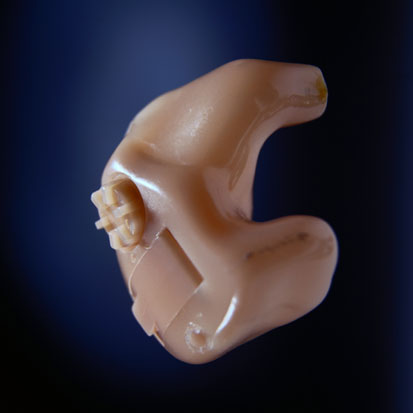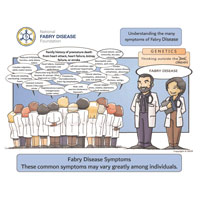Fabry Disease Ear, Nose & Throat Symptoms

The hearing related (audiology) symptoms of Fabry disease include: ringing in the ears (tinnitus), vertigo with dizziness and nausea, progressive hearing loss especially in the high-tone range, and sudden deafness in one or both ears. Audiology symptoms are being reported with increasing frequency with greater disease education and awareness. All of these symptoms are very common but as with other common Fabry disease symptoms, they occur at varying ages of onset and to degrees of severity among individuals with Fabry disease.
The basis for the Audiology symptoms is thought to be lipid (GL-3) accumulation causing narrowing and blockage of the blood vessels in the inner ear. This leads to auditory nerve fiber damage caused by decreased blood flow.
One study documented self-reported hearing loss in 41% of 98 male Fabry patients. An abnormal audiogram was obtained in 78% of these patients. Study of cochlear function (pertaining to the spiral-shaped cavity of the inner ear that resembles a snail shell and contains nerve endings essential for hearing) in 22 male patients disclosed a high prevalence of progressive hearing loss, both of sensory nerve origin (23%) and sudden deafness (32%), as well as ringing in the ears (27%).
The current treatment for audiology symptoms primarily includes anti-nausea medication for vertigo related nausea, hearing aids, infusion of vasodilators and steroids for sudden hearing loss, and cochlear implants for profound deafness.
It is very important for individuals with Fabry disease to receive a periodic evaluation of audiology symptoms. Evaluations for tinnitus, hearing loss, vertigo, and dizziness should occur at baseline and every 6 months thereafter, and evaluations for audiometry, tympanometry and otoacoustic emissions should occur at baseline and every year thereafter. Both sets of evaluations should also occur when symptoms progress.
Careful documentation of symptoms and their progression is important for both appropriate medical management of an individual's symptoms and the need for increased data submission to the Fabry Disease Registry. Submitting documentation to the Registry through participating physicians is critical to better understanding audiology involvement and subsequent continued research, education and potential improved treatment options.
Note: The primary source of this information including the proposed periodic assessments comes from the September 2006 Genetics in Medicine journal article entitled "Fabry disease: Guidelines for the evaluation and management of multi-organ system involvement".































Connect With Us